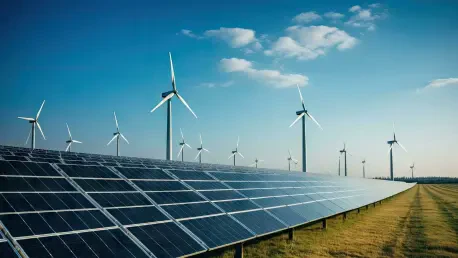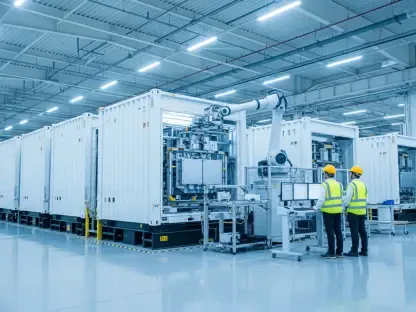In the rapidly evolving landscape of energy infrastructure, Christopher Hailstone stands out with his wealth of experience in energy management, renewable integration, and delivering sustainable electricity. His deep insights into grid reliability and utility strategies make him the perfect guide to unpack Tri-State Generation and Transmission Association’s latest resource plan. This interview delves into Tri-State’s ambitious strategies, discussing how they balance reliability, cost, and sustainability.
Can you elaborate on Tri-State’s commitment to maintaining a reliable, affordable, and responsible electric system?
Tri-State’s commitment is deeply rooted in our mission to serve our rural members with an electric system that meets their needs well into the future. We’ve designed our plans to ensure that reliability is at its core without straying from principles of affordability and responsibility. This includes a mix of energy sources that allows us to adapt to changing conditions while maintaining low costs and reducing environmental impacts. We strive to balance advanced technology and infrastructure development to support this commitment consistently across our network.
What are the main components of Tri-State’s 2023 Electric Resource Plan (ERP) Phase II Implementation Report?
The ERP Phase II focuses on a preferred portfolio that was determined to be the least-cost mix of generating resources among those considered. This includes a robust selection of renewable energies, enhanced storage solutions, and necessary natural gas facilities equipped for the future. We seek to meet stringent state emissions reductions and renewable energy standards while optimizing costs and exceeding reliability metrics for extreme weather conditions. The report outlines specific plans that target efficiency and viability, infrastructure readiness, and community involvement over the next several years.
How does the preferred portfolio ensure reliability, especially during extreme weather conditions?
Our preferred portfolio’s reliability is reinforced by its diverse range of energy sources, tailored to withstand fluctuations and peak demands typical during extreme weather. The inclusion of robust storage solutions and strategically located natural gas plants aids in maintaining continuous service. Each component, from wind and solar farms to battery systems and combustion turbines, is vetted to ensure they can support and even exceed industry-standard reliability metrics during harsh conditions.
What cost advantages does the preferred portfolio offer compared to other portfolios?
The preferred portfolio stands out primarily due to its cost-effectiveness in achieving our strategic goals and necessary state requirements. By optimizing resource selection and operational efficiency, it avoids massive investments in transmission upgrades and leverages existing infrastructure, saving about $370 million in capital expenditures through 2031. This forward-thinking approach allows us to provide affordable electricity without compromising on essential sustainability measures.
How does Tri-State plan to achieve the 80% reduction in greenhouse gas emissions by 2030? How was the 2005 baseline established?
Achieving this ambitious reduction requires an aggressive rollout of renewable resources, strategic plant retirements, and optimized energy operations. The 2005 baseline was established based on comprehensive data detailing our emissions at that point in time. It serves as a benchmark for our reduction targets, guiding our progress and initiatives such as the increase in solar and wind power, advanced battery integration, and transitioning away from coal-based power generation.
Can you break down the renewable resources in the preferred portfolio? What types and capacities of renewable resources are included?
Our renewable resource strategy includes 700 megawatts of power from solar and wind projects spread across multiple regions. Significant developments include 200 MW of solar power in Eastern Colorado, 100 MW of solar/battery hybrids in New Mexico, and substantial wind power installations in Colorado and Wyoming. These projects are complemented by numerous standalone storage projects to augment our grid’s flexibility and responsiveness.
What are the roles of storage resources in Tri-State’s preferred portfolio?
Storage resources are critical for managing the inherent variability of renewable energy. Our portfolio includes a variety of battery installations that stabilize power supplies, ensure resource adequacy during peak periods, and enhance overall grid reliability. By strategically deploying these storage facilities, we can balance supply and demand more effectively and provide backup during unexpected outages or demand spikes.
How does the natural gas combustion turbine facility with hydrogen-blend capability contribute to the plan, and why was Moffat County chosen for this facility?
The natural gas facility in Moffat County is pivotal for its flexibility and future-proofing capabilities. It’s designed to provide quick-response backup power and support during low renewable output events. Moffat County’s choice results from strategic regional needs, existing infrastructure, and community transition goals post-Craig Station retirement. Its hydrogen-blend capability aligns with our vision for a sustainable energy future by reducing carbon footprints.
Can you explain the significance of replacing combustion turbines at the J.M. Shafer Station?
Replacing the combustion turbines at J.M. Shafer Station with new, advanced units enhances both capacity and efficiency. These hydrogen-blend-capable turbines will increase the station’s nameplate capacity to 281 MW, enabling us to better handle peak loads and provide reliable power even as we increase our share of intermittent renewable energy sources. It’s a decisive step toward ensuring that our grid remains robust and adaptable.
How does Tri-State plan to manage transmission capital expenditures through 2031?
We aim to minimize capital expenditures through strategic project selection that leverages existing transmission capacity and avoids costly upgrades. By optimizing resource location and interconnections, we reduce the need for significant network investments. This approach helps us keep costs low for our members while facilitating a smooth integration of new energy resources into our grid.
What potential challenges or modifications do you foresee with the CoPUC’s review of the preferred portfolio?
The CoPUC review process may bring up challenges or require modifications related to intervenor feedback, regulatory updates, or shifts in market conditions. We are prepared for constructive discussions and adjustments, leveraging detailed modeling and stakeholder engagement to address concerns fully. Our goal is to ensure that the final portfolio approved is both compliant and meets our commitment to reliability and cost-effectiveness.
How does the preferred portfolio address the economic impacts of retiring the Craig Station?
We understand the economic ramifications associated with the Craig Station’s closure, so the preferred portfolio includes projects that sustain employment and community engagement in the region. Investments in new energy facilities and direct community assistance have been incorporated to provide economic pathways and stability for those affected by the transition. This balanced approach facilitates economic revitalization and continued development in the area.
Can you elaborate on the community involvement in developing the preferred portfolio, particularly with local officials in Moffat County and Craig?
Community involvement has been paramount from the outset. We’ve collaborated closely with local leaders and stakeholders in Moffat County and Craig to align our plans with regional goals and aspirations. Their input has helped shape our investment strategies and ensures our developments address local needs effectively while fostering long-term partnerships as we move forward.
What additional investments is Tri-State making in Moffat County besides the natural gas plant and storage facility?
Besides the natural gas plant and storage facility, we’re investing in ongoing projects like the 145-MW Axial Basin Solar project, contributing to local economic growth and infrastructure. Additionally, direct community support initiatives continue to be a priority, ensuring that our investments are beneficial not only for our energy portfolio but also for the socio-economic vitality of the area.
How will Tri-State maintain its long-standing commitment to the communities in northwest Colorado during the transition?
Our commitment goes beyond infrastructure by focusing on enduring relationships and community support initiatives. We continue to engage with local stakeholders, provide assistance, and create employment opportunities tied to our energy projects. This holistic approach underlines our dedication to being a positive force in the communities we serve, even as we transition our energy models.
What are the next steps Tri-State will take to work with state regulators and stakeholders in implementing this plan?
Key next steps involve open communication and collaboration with state regulators and stakeholders throughout the approval and implementation phases. We will actively engage with these parties to refine our plans in response to feedback and regulatory guidelines. Continuous dialogue ensures transparency and helps align our actions with both regional needs and state energy policies.
How does Tri-State plan to communicate and engage with its members about the new resource plan?
We plan to roll out comprehensive communication strategies via regular updates, informational meetings, and direct member engagement initiatives. Transparent reporting on progress and milestones, as well as forums for queries and feedback, are crucial to maintaining trust and support from our members. This ensures they remain informed stakeholders in their energy future.
What measures are in place to ensure that renewable energy goals are met without compromising the affordability of electricity for consumers?
A dual emphasis on cost management and strategic resource deployment guides our approach to meeting renewable energy goals without sacrificing affordability. By integrating lower-cost renewable solutions and strategically leveraging existing infrastructure, we balance progressing towards our sustainability targets and maintaining affordable electricity rates for our consumers.
Do you have any advice for our readers?
As we navigate the transition to more sustainable energy futures, it’s essential to stay informed about the changes and developments within our utility sectors. Engage with local plans, share feedback with providers, and support initiatives that prioritize both environmental stewardship and economic viability. Together, these efforts can contribute significantly to a balanced and sustainable energy landscape.









